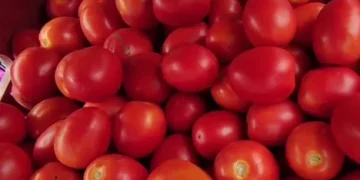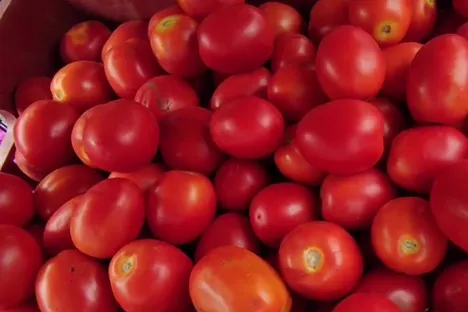Insights into Price Surges, Crop Diseases, and Market Strategies Amidst Adverse Weather
In Mysuru, India, tomato prices have skyrocketed to Rs 100 per kg, yet farmers are grappling with significant losses due to the onslaught of wilt disease impacting their crops. Recent unrelenting rains and abrupt weather changes have exacerbated the spread of the disease, leading to a drastic reduction in tomato yields. What was once a lucrative venture for farmers has now become a struggle to break even on cultivation investments. Efforts are underway to safeguard the crops, although farmers are burdened by the soaring costs of fertilizers and pesticides necessary for disease management.
Meanwhile, in Madanapalle, home to Asia’s largest tomato market, prices for A-grade tomatoes have surged to Rs 88 per kg due to a severe supply shortage. Retail prices have escalated even further, reaching between Rs 120-130 per kg at street vendors. The scarcity of tomatoes in the market is primarily attributed to adverse weather conditions that have adversely affected crop yields. This shortfall in supply has been compounded by a surge in demand from various regions, drawn by the renowned quality of Madanapalle tomatoes, celebrated for their natural color, shine, and size, characteristic of the region’s favorable agricultural conditions.
The situation underscores the complex dynamics faced by stakeholders across the tomato supply chain. Farmers are pressured to adopt stringent crop protection measures amidst unpredictable weather patterns, relying heavily on costly inputs to safeguard their harvests. Agricultural entrepreneurs specializing in tomato cultivation find themselves reevaluating their strategies in response to fluctuating market conditions and escalating production costs. Manufacturers of fertilizers and pesticides are challenged to innovate products that are effective yet affordable for farmers facing economic uncertainties.
As stakeholders navigate these challenges, collaboration between researchers and agricultural specialists becomes crucial. Efforts in developing resilient tomato varieties and sustainable agricultural practices are imperative to mitigate risks posed by climate variability and disease outbreaks. Moreover, market players must strategize to ensure a balance between supply and demand, leveraging technological advancements and market intelligence to stabilize prices and sustain profitability.































